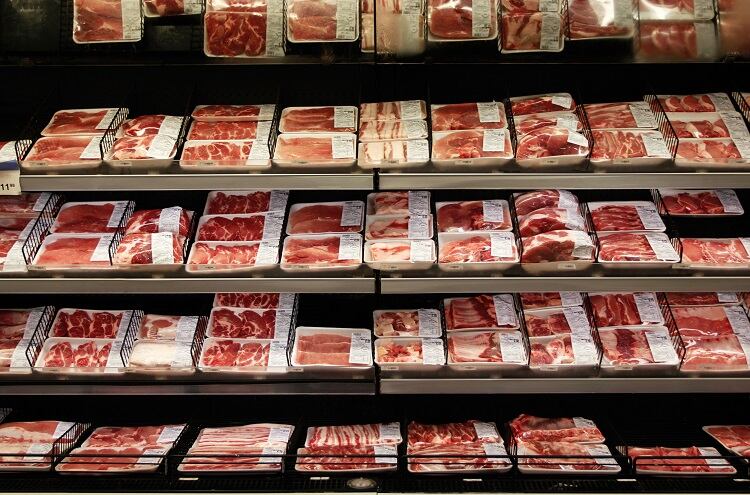It has been estimated that between 2010 and 2030, global demand for seafood will rise by 30%.
At least two major factors are thought to contribute to this growth. The first is significant growth in global populations. The United Nations predicts that by 2050, the world population could increase by more than two billion people, reaching more than 9 billion.
Another key driver is income growth: as incomes rise, consumers are more likely to consume more meat.
Unfortunately, seafood supply is not strong enough to meet this rising demand. Globally, under 7% of fisheries are underfished, with The World Bank estimating that close to 90% of global marine fish stocks are now fully exploited or overfished.
By-catch, habitat damage, and increased carbon emissions from fishing boats, are spurring the Good Food Institute (GFI) – which advocates for the development of alternative proteins – to explore new ways industry can close the gap in demand.
“A move away from these issues would make for a much kinder and sustainable food system,” according to Claire Bomkamp, cultivated seafood-focused senior scientist at the GFI.
One potential solution lies in cell-based seafood technology. While still ‘very much in its infancy’ compared to mammalian cell developments, Bomkamp suggested overcoming some technical hurdles will advance solutions for sustainable seafood.
Biomaterial optimisation
The GFI has collated a selection of ideas, from research projects to commercial opportunities and ecosystem-level interventions, under its Advancing Solutions to Alternative Proteins (ASAP) project platform. Some of these, she told delegates at the recent Industrializing Cell-Based Meats & Seafood event, concern the cultivated seafood sector.
The cell-based meat and seafood production process can be broken down into four steps: cell line development, culture medium, scaffolding biomaterials, and bioreactors and bioprocesses. Homing in on scaffolding, Bomkamp suggested additional innovation could help tailor cultivated seafood – and particularly cultivated fish – to culinary and biomechanical requirements.
GFI: WHAT IS A SCAFFOLD?
Scaffolding helps create structure and texture, by facilitating muscles, fat, and connective tissue development. “In order to produce structured and thick meat products, cells must be transferred to a scaffold,” explains GFI. “A scaffold ideally permits the attachment, differentiation, and maturation of cells in a specified manner, mimicking the 3D cytoarchitecture of meat while allowing for continuous perfusion of media, analogous to the vascularization of real tissue.
“Therefore, considerations for the porosity of the scaffold, mechanical properties, and biocompatibility are paramount.”
One consideration is the optimisation of biomaterials for cell adhesion and differentiation. In other words, she explained, identifying which materials are ‘really good’ for making scaffolds for fish and other forms of seafood.
The senior scientist puts her money on many of the same materials used for scaffolding in cultivated meat production being similarly effective for cell-based seafood. However, it is likely a small amount of optimisation will be required, she continued: “I think we can say [that] with a reasonable amount of confidence…”
However where invertebrates are concerned, such as crustaceans and molluscs, the scaffolding technology ‘could be significantly different’, Bomkamp suggested.
Making fish ‘flaky’
Achieving the correct thermal stability for collagen is another consideration. This challenge is ‘quite different’ for fish, compared to cultivated meat, due to seafood’s structure and texture.
Cooked fish becomes ‘flaky’ because the collagen melts at a different temperature to the muscle tissue. “I think that is going to be a really key attribute of a successful scaffold for cultivated fish,” explained Bomkamp, “the collagen is going to have to melt at the correct point of cooking.
“Otherwise, you’re going to have a product that doesn’t flake, or only flakes when you overcook your fish – which obviously you don’t want to do.”

Ensuring correct 3D geometry, including muscle fibre orientation, is also a challenge worthy of additional research.
This means ‘having the muscle fibres oriented the right way’, the senior scientist elaborated, as well as ensuring the cultivated product – for example a cell-based salmon – achieves the layers synonymous with its conventional counterpart.
Homing in on the fibre structure in a whole filet of fish, compared to a terrestrial animal, reveals horizontally oriented fibres put together in a ‘flat, wavy structure’. The muscles of land animals, on the other hand, have a ‘long thin structure’, which are ‘sort of akin to a piece of rope’ with fibres twisted together, Bomkamp explained.
Such differences do not make for an impossible challenge, the cultivated seafood expert stressed. “I think there are plenty of ways one could imagine achieving this with cultivated methods,” but suggested it does make for some ‘additional constraints’ relating to achieving seafood structure.
Cellular agriculture is just one of the opportunities we'll be probing at our upcoming broadcast event, Climate Smart Food. We'll be discussing a variety of issues, from sustainable sourcing, to sustainable consumption and food and ag tech that will support systems transformation.
Acacia Smith, Policy Manager at Good Food Institute, will also be joining our panel dissecting the role that plant-based innovation has in the transition to more sustainable consumption.
With the food system contributing around one-quarter of greenhouse gas emissions today, it is clear that business-as-usual is not an option. So what needs to change if we are to transition towards truly sustainable nutrition? Join us to find out.
To register for free, click HERE, or to view details of our full programme, click HERE.





